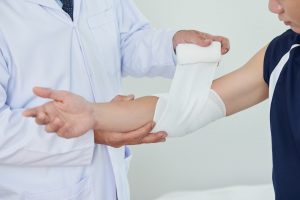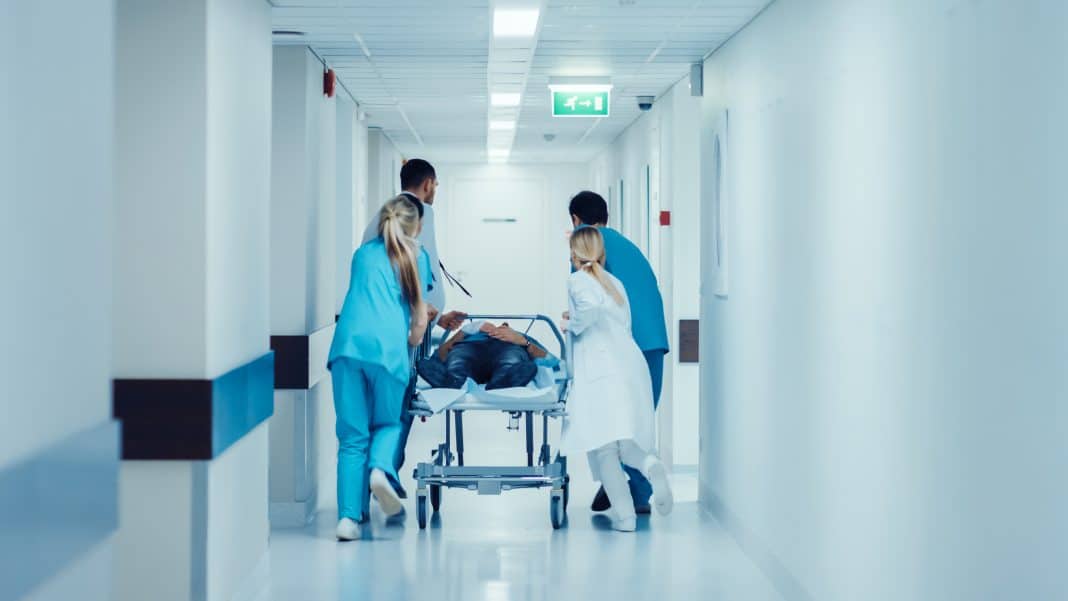According to the Department of Health, since the start of the Covid-19 pandemic, there have been more than a million Covid cases in Australia, with reports indicating that there are nearly 4000 patients in hospitals currently, and more than 300 in ICU.
Combined with staff shortages and record-breaking hospitalisations, there are fears the strain on the health system will see patients being turned away.
In response to this, Dr Andrew Thompson, a registered doctor at InstantScripts says Australians should be informed about alternatives to emergency departments, to ensure all patients receive the treatment they need and to avoid burnout among hospital staff.
“There are medical issues and injuries for which patients should go to emergency, as they could be potentially fatal or quickly escalate in severity,” explains Dr Thompson.
“Examples are suspected concussion, breathing problems, blood loss, accidents and chest pain. Patients should seek immediate treatment for these by calling 000 or if they can travel, going direct to the nearest hospital.”
However, Dr Thompson says that “for less urgent issues, there are a plethora of effective treatment avenues available”.
“I recommend Australians compile a list of alternatives, from late-night dental surgeries, pharmacies, and walk-in after-hour medical centres with x-ray facilities, to online telehealth services that offer fast consultations and prescriptions,” he advises.
“Keep the list easily accessible and if you don’t have a regular GP, consider finding one in your local area who can be up to date on your medical history and conditions.”
Dr Thompson adds: “Ambulance Victoria recently issued a code red alert as its services grapple with an unprecedented volume of calls, many of which could be tended to by GPs.
“Using Government-funded service HealthDirect, which offers a dedicated helpline (1800 022 222), allows Aussies to speak to a registered nurse to gauge whether they require a hospital visit.
“The service is available 24/7. This could reduce the strain on 000 call operators and ambulance services, allowing them to tend to patients in need of critical care.”
Fast treatments for 10 medical and health issues without visiting the ED
Dr Thompson shares the following ways community members can get fast treatment for certain medical and health issues, without the need to visit the emergency department:
- Suspected sprain, fracture, or broken bone. According to Dr Thompson, uncomplicated breaks and other bone injuries don’t always require a trip to a hospital. He says walk-in medical centres with integrated services, such as x-ray, pathology and surgery facilities for simple procedures, are a good option. Some operate after hours, particularly in metro areas. X-rays referrals can be obtained from telehealth services such as InstantScripts, where a doctor provides a consultation followed by a referral.
- Acute dental pain. Dr Thompson explains that oral pain can often point to a dental infection, which will need to be treated before a patient can see a dentist. He points out that a doctor can recommend pain relief or prescribe antibiotics for the infection and once treated, a dentist visit is a next step. For those who need immediate dental work, after hours and emergency dental clinics – some of which have dental surgeries – are also readily available in major metro areas. Emergency medical centres can also assist with dental pain, and some are also equipped with dental surgeries.
- Migraine. According to Dr Thompson, severe ongoing headaches and migraines can be a source of concern and stress, particularly if they occur late at night when many local medical centres are closed. Dr Thompson recommends patients consider an after-hours doctor consultation through an online telehealth service before heading to an emergency department. He explains that services, such as InstantScripts, offer $40 flat rate consultations from 7 AM to midnight and allow patients to access a doctor in as little as 15 minutes. Telehealth and prescription medicine services can diagnose first-time presentations and recommend treatment plans, as well as direct severe cases to an ED. Dr Thompson warns that severe migraine symptoms such as confusion, trouble speaking, numbness, vision changes or fever require a trip to an ED. For symptoms that don’t subside in 24 hours or worsen, he also recommends visiting a doctor in person.
- Fever. Dr Thompson explains that fever can point to a number of ailments and are rarely harmful. However, he adds, when a fever occurs in a baby under three months, lasts more than three days or is accompanied by other symptoms, such as trouble breathing, drowsiness, a stiff neck, ongoing vomiting or diarrhoea, hallucinations, muscle spasms and sensitivity to light, they will require immediate medical attention at an ED. Dr Thompson recommends that in all other cases, and in children over three months and adults, a fever can be effectively treated at home. If it occurs late at night, Dr Thompson recommends visiting a late-night pharmacy for medicine to break the fever. Those who are unsure if a fever is serious can use an online telehealth service for an after-hours consultation or speak to a registered nurse by calling the HealthDirect helpline (1800 022 222). Dr Thompson also warns that fever can be one of the first symptoms of Covid and, in the current climate, it may be wise to seek a Covid test.
- Severe flu, Covid-19, or suspected pneumonia. According to Dr Thompson babies, young children and those over-60 with suspected pneumonia, and anyone who has a virus that comes with sustained fever, difficulty breathing, and severe chest pain should be taken to an ED. Anyone else suffering any viral infection can seek immediate doctor consultations through an online telehealth service or walk-in medical centre. Dr Thompson usually recommends an in-person doctor consultation. Those with respiratory symptoms should also seek a Covid test or source a rapid antigen test, and self-isolate while awaiting results.
- Severe and sudden pain. Those experiencing constant, severe and worsening chest or abdominal pain should visit an ED, underscores Dr Thompson. Those who choose to visit a doctor in-person may be directed to a number of tests to rule out severe issues. For lower back pain or any other pain associated with muscles or joints, Dr Thompson says treatment can be sought at a walk-in medical centre or a late-night pharmacy that can provide pain relief. For those who still want reassurance quickly, helplines such as National Home Doctor (13SICK) provide after-hours in-home doctor services within four hours.
- Urinary tract infection (UTI). One of the most common reasons Australians visit an ED, according to Dr Thompson, is for UTIs. Dr Thompson says UTIs are a relatively common concern that can be treated with antibiotics. Dr Thompson recommends seeking a telehealth consultation with a doctor, particularly for those experiencing UTI symptoms – such as a persistent urge to urinate, a burning sensation when urinating, passing frequent and small amounts of urine and cloudy urine – late at night, as these services are often available after hours. Some doctors may seek a test to confirm a diagnosis, and in these cases, patients could visit a walk-in medical centre for a urine test, while some pharmacies offer at-home tests.
- Major rashes or other skin concerns. Dr Thompsons says that if a rash covers the entire body, or is accompanied by other symptoms, such as pain and fever, it warrants an ED visit. However, cases with isolated rashes can be seen by a GP, and a walk-in medical centre is a good immediate option. Particularly for mild rashes or skin concerns, Dr Thompson says GPs can try some treatment options before recommending a dermatologist.
- Allergic reaction. Dr Thompson warns that severe symptoms such as anaphylaxis, light-headedness, difficulty breathing, wheezing, confusion and anxiety – and even first-time presentations of allergic reactions – should be tended to in a hospital ED. Minor allergic reactions can access treatment through an online telehealth service or medical centre. Some mild cases may simply require an over-the-counter antihistamine, he says.
- Mental health symptoms or concern over the mental health of a loved one or friend. There are numerous mental health services for help and advice. Dr Thompson says those experiencing suicidal ideation or have attempted to self-harm should seek immediate help, either at an ED or through a helpline such as Lifeline (13 11 14). For prolonged mental health issues, telehealth services can provide numerous strategies for Aussies to tackle mental health concerns. If it will help the patient to access therapy, a GP can develop a comprehensive Medicare-covered mental health plan that provides access to a psychologist. Aussies who have a serious concern for the wellbeing of another person can also request a police welfare check to ensure they are safe and healthy.






